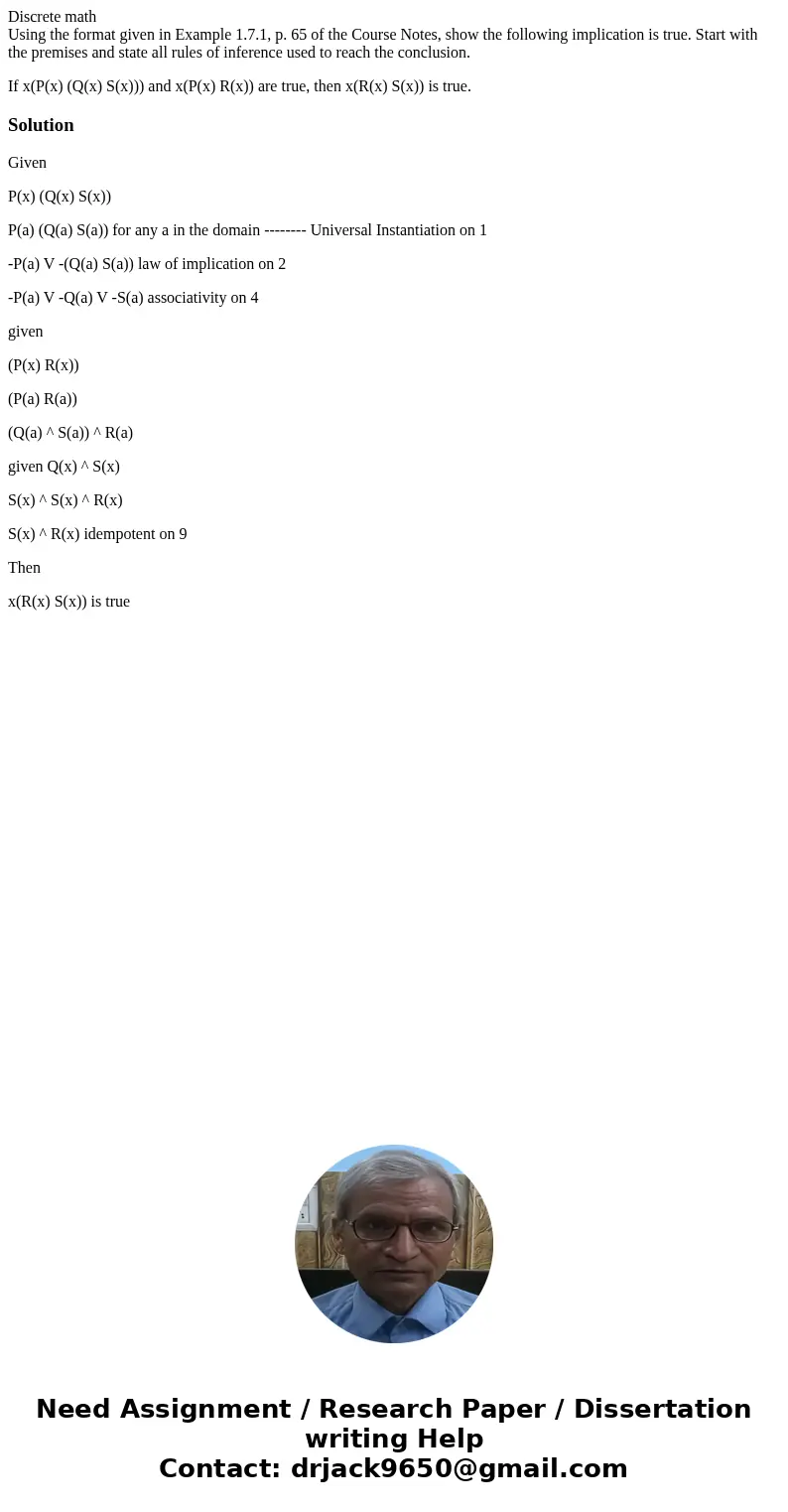Discrete math Using the format given in Example 171 p 65 of
Discrete math
Using the format given in Example 1.7.1, p. 65 of the Course Notes, show the following implication is true. Start with the premises and state all rules of inference used to reach the conclusion.
If x(P(x) (Q(x) S(x))) and x(P(x) R(x)) are true, then x(R(x) S(x)) is true.
Solution
Given
P(x) (Q(x) S(x))
P(a) (Q(a) S(a)) for any a in the domain -------- Universal Instantiation on 1
-P(a) V -(Q(a) S(a)) law of implication on 2
-P(a) V -Q(a) V -S(a) associativity on 4
given
(P(x) R(x))
(P(a) R(a))
(Q(a) ^ S(a)) ^ R(a)
given Q(x) ^ S(x)
S(x) ^ S(x) ^ R(x)
S(x) ^ R(x) idempotent on 9
Then
x(R(x) S(x)) is true

 Homework Sourse
Homework Sourse